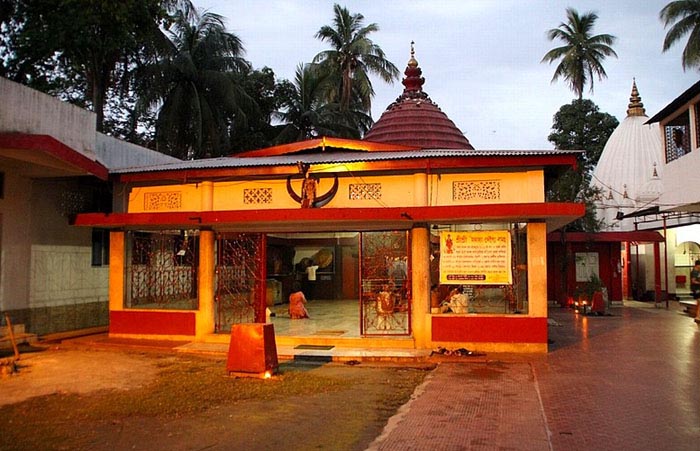Ugratara Temple

Information of Ugratara Temple, Guwahati, Kamrup, Assam
The popular Ugratara Temple is located specifically in the Uzan Bazaar, Guwahati in the state of Assam. It is considered to be one of the best and highly visited tourist destinations of the state which also makes it a significant landmark. The temple is regarded as an imperative pilgrimage site thus, making it quite a sacred place in the state.
Ugratara Temple Religious Significance
The Ugratara Temple has immense religious significance for being a Shakti shrine or Shakti Peeth and the presiding deity is goddess Ugratara who is stated to be just another representation of the famous goddess Parvati. The "Shakti Peethas" or rather the consecrated places related to cosmic power is those shrines or sites of worship sacred to the Hindu goddess Sati or Parvati. These places are located across the country and its subcontinent. Goddess Sati is said to be the embodiment of Parvati who is regarded as the goddess of marital gaiety, long life and most importantly harmony. The mentioned shrine is supposed to be quite a vital Shakti shrine in the country and is therefore, considered to be highly revered by the numerous devotees visiting the temple each year. The shrine, inspite of being a Hindu temple is also known to relate to Buddhism and is associated with Tiksna Kanta and Eka Jata with regard to the Buddhist place of worship. A particular feature or characteristic which is quite unique to the Ugratara temple is the absence of any kind of statue or idol of the main deity which is quite contrasting to the characteristics of the other Hindu shrines. A small ditch filled completely with water can be found in the interior of the temple which is stated to be the representation of the goddess.
Ugratara Temple Mythology & History
As per the legends, it is believed that Sati indulged in an act of self-immolation when her father, Daksha insulted her husband, Lord Shiva by not inviting them both to a yagna which was performed by him. After, goddess Sati sacrificed herself, Lord Shiva started dancing in rage and anguish with the remnants of the goddess's body which led to a slow process of annihilation of the entire universe. In order to stop the destruction, other gods were compelled to interfere and Lord Vishnu released his weapon that is the Sudarshan Chakra in order to disperse the corpse of the goddess. This is when Sati's different body parts fell at quite a few places across the Indian subcontinent. These places further transformed into places known as Shakti Peethas presently. The Ugratara temple is supposed to be the site where the naval of Sati fell. The Shakti Peethas have been differently described in various Puranas. According to the Kalika Purana there are known to exist seven such places which are chiefly centred in and around another Shakti Peeth in Assam known as Kamakhya.
Ugratara Temple Architectural Significance
The current shrine of Ugratara was constructed by Siva Singha who was an Ahom King in the year 1725 A.D. and had dug out a tank three years prior to the actual construction. The tank was named as Jorepukhri and is located on the eastern side of the temple which even exists till date. The upper portion of the shrine was damaged owing to a devastating earthquake in the year 1897 which was again reconstructed later by a devotee. The temple complex is also known to include a shrine dedicated to Lord Shiva which is situated at the back of the central temple area.
- Andhra Pradesh Temples
- Assam Temples
- Bihar Temples
- New Delhi Temples
- Goa Temples
- Gujarat Temples
- Jammu and Kashmir Temples
- Karnataka Temples
- Kerala Temples
- Madhya Pradesh Temples
- Maharashtra Temples
- Odisha Temples
- Punjab Temples
- Rajasthan Temples
- Sikkim Temples
- Tamil Nadu Temples
- Telangana Temples
- Uttar Pradesh Temples
- Uttarakhand Temples
- West Bengal Temples